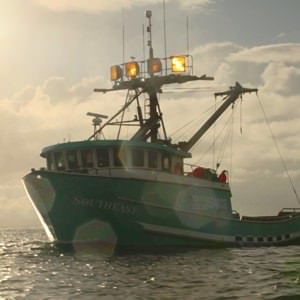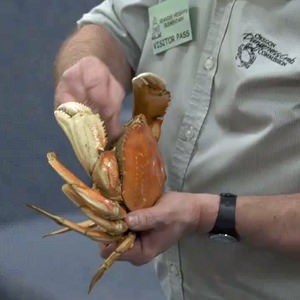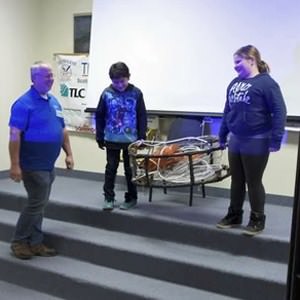Commercial Dungeness crab season is red hot and rolling, despite cold and wet conditions.
Dean Ellsworth says his 44-foot fishing boat, The Nola K, is his winter home at this time of year.
Ellsworth and his three-man crew spend long days and nights tossing out and pulling in nearly a thousand 80-pound crab pots during a fishing season that’s hitting its stride.
“The crab season means a lot to us,” noted Ellsworth, a longtime crab fishermen who began fishing more than 45 years ago. “Frankly, hundreds of people work on boats or in canneries and the crab season is a critical part of small town economies.”
Cannery crews at Bornstein Seafoods in Astoria work around the clock processing and packing thousands of pounds of fresh Dungeness.
Christa Svensson, spokesperson for Bornstein Seafoods, called the processing and packing of crab ‘old school’ that relies on hand labor, saying, “They shake all the crab meat out of the crab — they do the body parts separate from the legs, and then it goes in a flotation tank that helps separate the shells out. Then it gets rinsed out and packed into five pound tubs of crab meat.”
Dungeness crab is Oregon’s most valuable seafood. Last year, fishermen landed more than 14 million pounds of crab that paid more than $50 million to the fishermen.
More importantly, the tasty crustaceans were worth more than $100 million to Oregon’s economy.
It’s a valuable commodity for sure — but how many people know how the fishermen catch those tasty crustaceans?
This year, fishermen say Oregon seafood is so important to the state that it’s time to take the message to school. In Seaside, youngsters are learning valuable lessons about Oregon’s famous seafood.
The program is called Boat to School, and it’s a pilot project at Seaside Heights Elementary School in which fishermen show fifth-graders where their food comes from.
Fisherman John Corbin explained to students how a crab trap works: “This is basically an 80-pound trap and it is lowered down to rest on the ocean floor. There’s bait inside that crabs are drawn to and they basically wander around the trap until they find this tunnel and they can go inside.”
Boat to School lessons include other seafood too. The one-hour classroom visit includes fishermen who catch salmon, rockfish, Oregon’s pink shrimp and albacore tuna.
Every other month the students sit in on a “fisherman talk” with an activity book filled with lessons on math, marine science, writing and art. They even receive a seafood sample to take home.
Nancy Fitzpatrick, Executive Director of the Oregon Albacore Commission, said that the Boat to School lessons fill an important information gap in coastal communities: “This helps connect youngsters with their community; it teaches kids where their food comes from and that they can eat healthy and local and enjoy it.”
Student’s questions show off keen and even practical interest in the topics too.
One student asked fisherman John Corbin, “Can a crab bite you?”
“They don’t actually bite you, but they can pinch you,” said Corbin. “We call the front of a Dungeness crab the ‘business end’ and you never want to get near the business end of a crab. So you always grab a crab from the back or hold the pinchers in each hand so they can’t pinch you.”
The Boat to School pilot project was launched last October thanks to a grant from the Oregon Department of Education.
Fitzpatrick said that word of its success is spreading and the pilot project promises to be just the start: “We are hoping that this can work everywhere in the state. It doesn’t have to be just Oregon either, but all of the coastal states that produce their seafood. Perhaps we act as a template for other areas to develop something like this for their students.”



